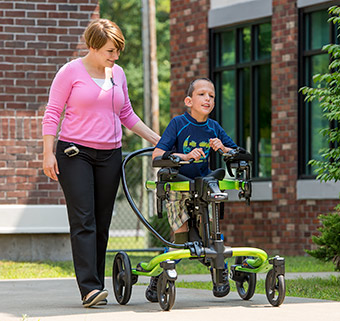5 Steps to Improving Communication on the Special Education Team
Special Education Team Roles and Responsibilities
| May 2013Special Education Team Roles and Responsibilities
 There are many members of the special education team: students, parents, teachers, teacher’s assistants, administrators and therapists. Some team members, especially therapists, can have a varied caseload with students from different classrooms, different grades and even different schools. This can make it difficult to communicate effectively with all team members for each student. Each team member brings a different perspective. Therapists don’t have the benefit of seeing most students daily as teachers do, so communication between therapist and the student’s parents and teacher is crucial to determine a student’s on-going progress. This can also be tough for parents as their child progresses through school and meets a new set of teachers from year to year. Here are five simple things you can do to forge stronger relationships within the special education team.
There are many members of the special education team: students, parents, teachers, teacher’s assistants, administrators and therapists. Some team members, especially therapists, can have a varied caseload with students from different classrooms, different grades and even different schools. This can make it difficult to communicate effectively with all team members for each student. Each team member brings a different perspective. Therapists don’t have the benefit of seeing most students daily as teachers do, so communication between therapist and the student’s parents and teacher is crucial to determine a student’s on-going progress. This can also be tough for parents as their child progresses through school and meets a new set of teachers from year to year. Here are five simple things you can do to forge stronger relationships within the special education team.
Team Communication Improvement Steps
Step 1: Introduce Yourself
The most important step to improving communication is to introduce yourself to as many of the members of the students’ special education team as possible. It sounds obvious, but it’s often neglected. By forming relationships with school staff you will be more likely to hear about therapy concerns that might otherwise impact the student’s educational abilities. If some of your students are pulled out of the classroom for therapy sessions, try to make a point of observing them in the classroom as well. This makes you more visible and available to other staff members.
Many times the parents are the true team leaders. They can provide all the past medical and educational history and the best overview of the child. Therapists should always remember to introduce themselves to the parents. Send a letter home or make a phone call to provide your contact information and encourage questions. Ask the parents what concerns them. Welcome their questions and feedback.
Step 2: Educate and be Educated
More and more students with special needs are being included in regular education settings. As a result, many teachers are not fully aware of the role of school based occupational and physical therapists. Educate team members about your role as early as possible. You want to avoid situations where three months into the school year a teacher asks the physical therapist why the student is not working on handwriting. Try giving an inservice to staff members answering the basic questions of school based therapy such as: What is occupational or physical therapy? What is the difference between school-based and medically based therapy? What type of activities will you be working on? Define for teachers and parents frequently used therapy terminology. Simplify complex topics such as sensory integration, neurodevelopmental treatment and muscle tone. Schedule the inservice during school hours and evening hours as well so that parents can attend.
Parents and school staff offer so much knowledge and insight on a student. Tap into that knowledge and learn from other special education team members. Therapists see just a snapshot of a student’s daily life and they need to see the whole picture.
Step 3: Establish How To Communicate
You will need to determine how you will communicate with all the team members. Establish this early in the school year and with a positive attitude. Perhaps a monthly meeting with a teacher or phone call home would be an effective way to address current goals or concerns. Maybe sending weekly or monthly progress reports to the teachers and parents may be a suitable option for some students. E-mail can be a simple way for many parties to communicate to all members of the team. Don’t always offer criticism or problems. If a student does particularly well on a motor skill task during therapy let the teachers and the parents hear about it. For students with many team members, one option is a specialized notebook such as My School Journal published by Your Therapy Source Inc. This is a daily or weekly log that allows for quick, simple written documentation from each member of the special education team.
Step 4: Provide Carry-Over Activities and Ideas
Therapy is only provided for a limited amount of time for each student. In order for therapy goals to be met, most therapeutic activities must be carried out throughout the student’s entire day. Since teachers and parents are the primary instructors in the student’s life, it is critical for you to provide teachers and parents with carry-over activities that support your therapy goals for the child. Offer activities that are easy to perform throughout the course of the day rather than “therapy homework” which adds one more thing for a teacher or parent to supervise. Try providing parents and teachers with fun, easy, therapeutic games that can be played with the child. Keep in mind that the activities should be written in simple format with no medical terminology.
Check with teachers and parents for ideas and activities that they need carried over during therapy sessions. If a student is following a certain behavior plan you will want to know what that entails. If a student is working on specific subject matter that needs reinforcement, perhaps you could incorporate academic material into the therapy session.
Step 5: Follow Through
Respond promptly to any issues or concerns that arise. This reassures all the team members that you have read and validate their comments. As long as they’re reasonable, fulfill all the requests made of you, that way you can expect the same in return. If you make a suggestion during a team meeting, be sure to follow through on the suggestion and be available to offer feedback on how it went at the next meeting.
By following these five steps you’ll ensure that everyone’s voice is heard, and more importantly, you’ll be confident that you’re doing the best for your student.
Your Therapy Source is an online Source for school-based therapy: www.yourtherapysource.com e-mail: contactus@yourtherapysource.com




